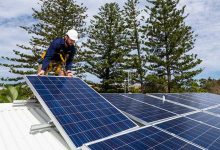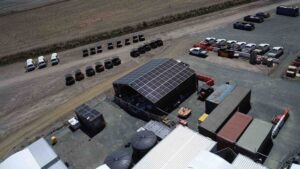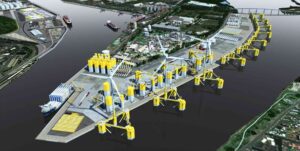The Clean Energy Council has described 2019 as “a remarkable year” for the Australian clean energy sector, and says the industry is ideally placed to support the Australian economy through a tough period.
According to the latest Clean Energy Australia report, published by the CEC, Australia set new records for renewable energy investment and deployment across both the small and large segments in 2019. The CEC hopes that governments will seize on this momentum, as they look for ways to stimulate the Australian economy as it recovers from the impacts of the Covid-19 pandemic.
In 2019, the amount of new clean energy capacity additions were split evenly between the large-scale and small-scale sectors, each setting new records and contributing half of the 4,400MW.
The CEC estimates this strong investment activity amounted to $4.3 billion in 2019, and supported the creation of more than 4,000 new jobs in the sector.
Australia set its third consecutive annual record for rooftop solar installations, with 2,200MW of new rooftop solar being added in 2019. While the number of installations hasn’t quite recovered to the 2011 peak of 360,000, the average system size has more than tripled since then.

NSW retook the lead in the rooftop solar market for the first time since 2010, with 597MW of new rooftop solar capacity added in the 2019 year, overtaking Queensland with 588MW, with Victoria ranking third with 450MW.
More than 2,200MW of additional large-scale wind and solar capacity was added to the Australian grid last year. Around two-thirds of this capacity was in the form of new large-scale solar projects, adding 1,416MW, with wind generation adding 837MW across eight projects.
Renewable energy sources now supply around a quarter of Australia’s electricity supply, with the amount of wind generation surpassing hydroelectricity generation for the first time.
“A record 2019 saw Australia take a major step towards a clean energy future, with 4.4 GW of renewable energy capacity installed, which is the equivalent to more than two times the capacity of the Liddell Power Station installed in just a single year,” CEC chief executive Kane Thornton said.
“Last year saw the construction of 34 new large-scale renewable energy projects, adding 2.2 GW of clean energy to the grid. This represents around $4.3 billion in investment and the creation of more than 4,000 new jobs.”

The strong performance was also reflected in surging growth of the battery storage market, with more than 22,000 new residential battery systems installed last year. The cumulative installed storage capacity has now passed 1 GWh.
The CEC said that the clean energy sector was well placed to meet the combined need to support further investment in new generation capacity as significant parts of Australia’s coal generator fleet reach retirement, and an urgent need to find new stimulus for the Australian economy in the wake of Covid-19.
In January, the CEC issued a warning call to governments that they must address emerging barriers to investment in the sector, including growing grid connection challenges, as well as ensuring there is sufficient policy support in place to facilitate investment.
“Our ageing coal-fired power stations are becoming increasingly unreliable, with many due to retire in the next 15 years. We have now reached a critical point where we must continue to grow our renewable energy capacity and accelerate work to upgrade our outdated grid infrastructure so that we can successfully transition to a modern, clean energy system,” Thornton added.
“The renewable energy industry is uniquely placed to lead Australia’s recovery from the COVID-19 crisis. In addition to providing much-needed stimulus to the Australian economy, we can insulate households and businesses from high electricity costs while also ensuring that we meet our emissions reductions obligations.”
The Clean Energy Council was also encouraged by the surge in investment in new hydrogen projects, with $370 million in government funding being committed under the National Hydrogen Strategy to support the growth of the sector.
Hydrogen has the potential to further boost the uptake of renewable energy projects, providing a way for Australia’s ample wind and solar resources to be converted into a zero-emissions fuel for both domestic and international markets.
On Monday, the Australian Bureau of Statistics released updated jobs figures for the renewable energy sector, showing that employment in the sector had grown to new record levels in the 2018-19 financial year, exceeding 26,000 full-time equivalent workers for the first time.
RenewEconomy and its sister sites One Step Off The Grid and The Driven will continue to publish throughout the Covid-19 crisis, posting good news about technology and project development, and holding government, regulators and business to account. But as the conference market evaporates, and some advertisers pull in their budgets, readers can help by making a voluntary donation here to help ensure we can continue to offer the service free of charge and to as wide an audience as possible. Thankyou for your support.










